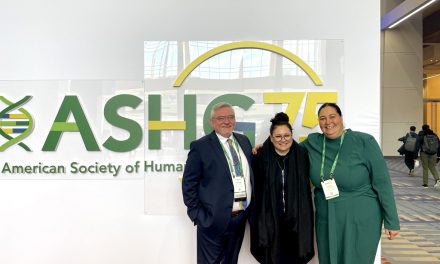With the onset of COVID-19 and associated restrictions imposed on travel and face-to-face consultations, Goondir Health Services, like most other health services, had to take their medical practices online.
But when your service region covers 72,000km² and many of your patients live in remote and very remote communities, just connecting by telephone means important health indicators can be missed, especially in patients with chronic disease.
The concept of Virtual Health Services was identified when Goondir’s IT Manager investigated the opportunity when he attended a conference, but back then the government did not support a virtual model of care and GPs preferred to stick with the status quo of service delivery face-to-face.
The outbreak of the COVID-19 pandemic and the restrictions in place created a need to reduce foot traffic in the clinic. Goondir then introduced remote monitoring through Virtual Health Services to keep up the quality of care, and empowered clients to self-manage their chronic conditions. Goondir utilized its COVID funding to implement this service.
Bittu Ann Cherian (Ann), Goondir’s Virtual Health Services (VHS) Manager said the service looked at a number of potential providers for the VHS but decided to proceed with Telstra because of its end-to-end service provision and network coverage in regional Queensland.
“Because most of our chronic disease clients reside in rural and remote locations, we had to prioritise good network coverage in choosing a VHS provider.” Ms Cherian said.
Goondir partnered with Telstra Health in implementing Virtual Health Monitoring using Telstra’s MyCareManager application with plans for potential integration with Communicare which is Goondir’s Patient Information Recall System (PIRS).
Ann joined the Goondir team in July 2020 as their very first Virtual Health Services Manager and has fallen in love with the project.
“This project and the outcomes it delivers for our chronic disease clients is very close to my heart,” she said.
Today, around 200 chronic disease patients access the service through Goondir, which monitors their daily blood sugar, blood pressure, oxygen saturation and weight, sending the observations back to Goondir’s service dashboard where they are actively monitored.
This way, dashboard alerts indicating an abnormal observation, which Goondir’s systems record as ‘red-flags,’ can be intervened and addressed remotely. Goondir’s clinicians contact the client via telehealth, providing follow-up care in the comfort of the client’s homes.
“Eliminating our client’s need to travel long distances for consults, sometimes 200-300kms, we can now monitor high-risk clients in real time. It’s extremely empowering: we’re breaking access barriers, being more responsive, and enabling timely intervention and access to specialist care.”
It also empowers patients to take control of their health journey. Often, if people see a statistic trending in the wrong direction (e.g., high blood sugar), the person can adjust their lifestyle choices.
“Clients in remote and very remote communities can now use a smart device to monitor their vitals every day and allow them to understand changes in real-time and avoid potentially preventable hospitalisation.”
Before the VHS could be implemented, the Goondir team consulted with elders, clients, and community members to discuss the technology and demonstrate its benefits. The team introduced the monitoring devices and the tablet that links it all together and demonstrated its ease of use.
“The services help promote health literacy and confidence with using technology for improved health outcomes. We are also in conversation with Telstra Health to improve our clients’ accessibility to the service and anticipate greater coverage over the coming months. It’s wonderful being able to positively impact so many lives through the application of remote virtual monitoring.”
The VHS has been successful as a reactive tool (intervention/prevention model) for monitoring patients, but in the future, it could be used as a tool to predict (predictive model) adverse events before their occurrence.
In December 2021, Goondir Health Services partnered with Dr. Xujuan Zhou from the University of Southern Queensland who will analyse multiple VHS data points to develop artificial intelligence (AI)-based algorithms to predict the onset of adverse chronic disease conditions in Goondir’s VHS clients.













